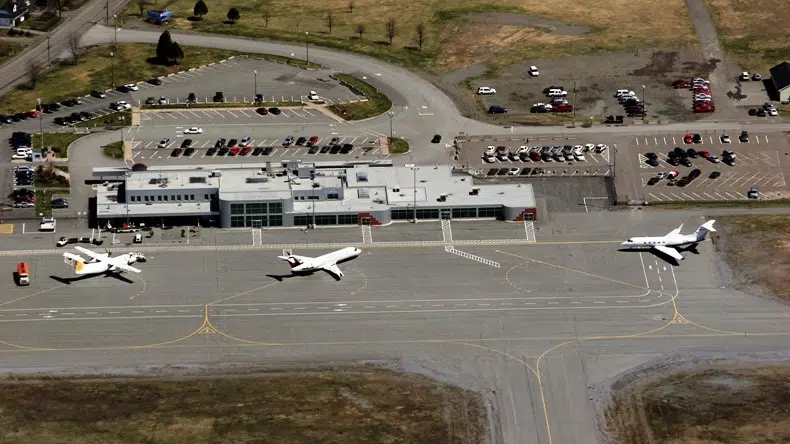It could take years for the Saint John Airport to recover from the impacts of the COVID-19 pandemic, according to its CEO.
Derrick Stanford made the comments during the airport’s first virtual annual general meeting Thursday morning.
“Passenger traffic has disappeared and we don’t know when it’ll come back,” said Stanford during his presentation.
The airport remains open but all passenger flights have been grounded, leading to a drastic reduction in revenues.
But Stanford said many of their costs are fixed and cannot be reduced, noting they must maintain a high level of safety and security.
“We’re moving quickly to stem controllable spending and reduce operating costs as much as possible. YSJ has deferred or cancelled over $5 million in capital projects and significantly reduced operating budgets for 2020 by over $1.3 million in expenses,” said Stanford.
Stanford said their goal of hitting 500,000 passengers a year by 2025 has changed due to the pandemic.
Passenger volume at the airport is expected to be down 90 per cent between March and June, and 50 to 70 per cent for the rest of 2020.
“In the next two years, 2021 and 2022, we anticipate YSJ’s passenger growth will continue to recover, but we will not surpass 2019 numbers until at least 2023,” said Stanford.
The Saint John Airport experienced flat growth in 2019 with 281,069 passengers, a decrease of 0.4 per cent over 2018.
Larry Hachey, chair of the Saint John Airport’s board of directors, said they need financial help from government – and they need it now.
Hachey said the drastic and sudden loss of airport revenues has been “completely devastating” for the airport.
“It’s like a tornado and an earthquake. This coronavirus outbreak is a natural disaster and it’s not anyone’s fault, but some of the communities will feel the effects more greatly than others,” said Hachey.
“On behalf of the Saint John Airport and our sister airports across New Brunswick, I cannot stress enough the urgency for short-term financial relief to address our immediate cash flow challenges.”
The Atlantic Canada Airports Association estimated the operational revenue loss for the region’s airports could be as high as $118 million this year.
But despite the challenges, Stanford said he is hopeful about the future of the Saint John Airport.
“The playing field will be rewritten and the Saint John market will continue to be a verty attractive one to our airline partners,” he said.
“As the CEO, I’ve never faced such challenging circumstances, but along with my counterparts at other N.B. airports, we’re determined to see our organizations through this unparallel trial until our friends and neighbours are ready to travel and experience all that the world has to offer again.”




